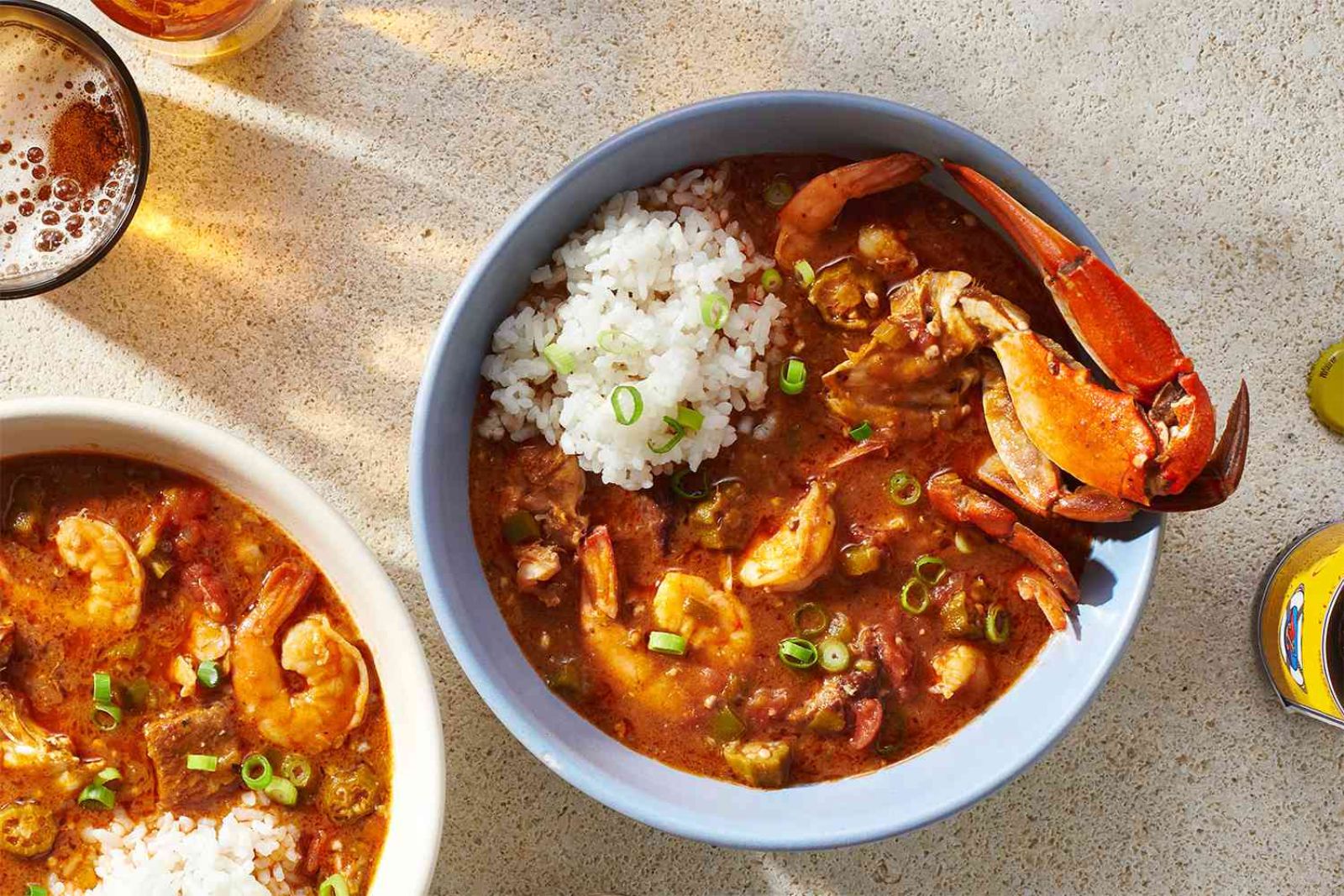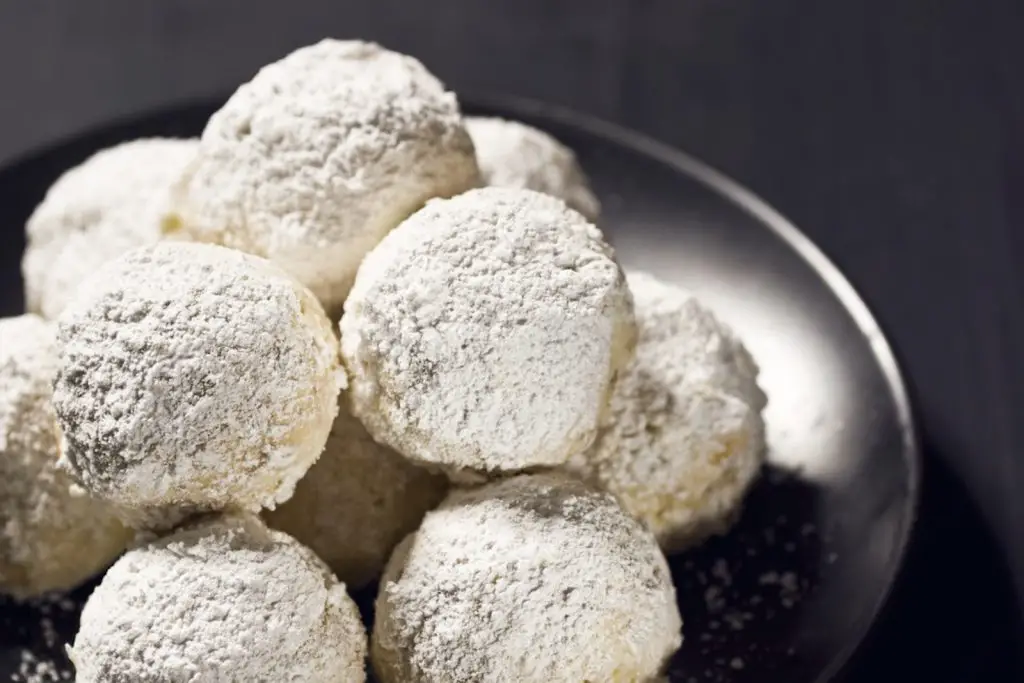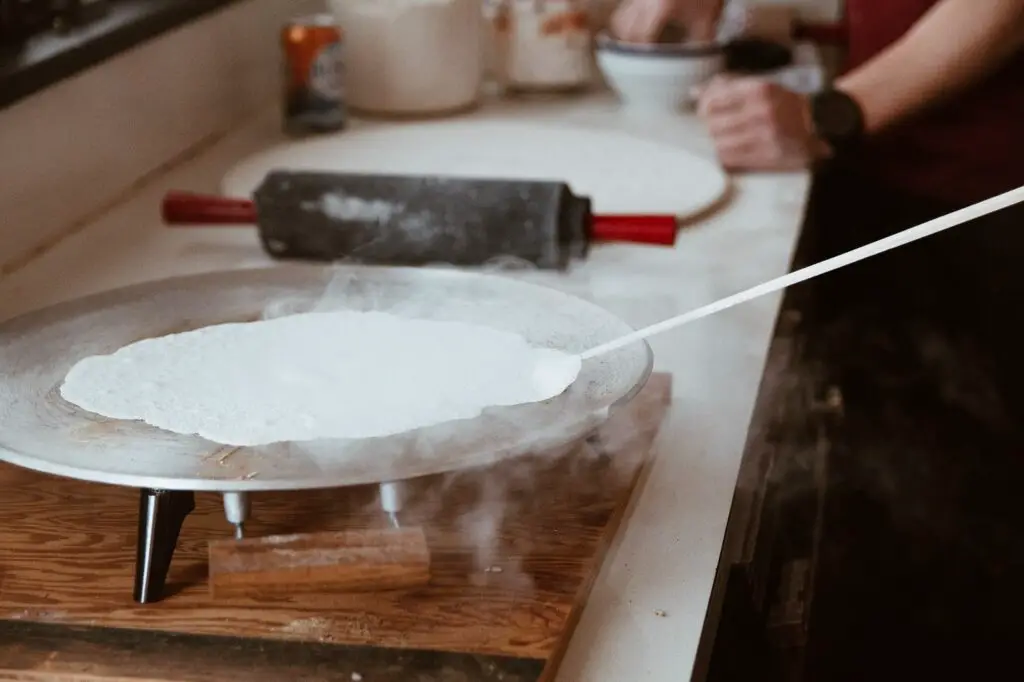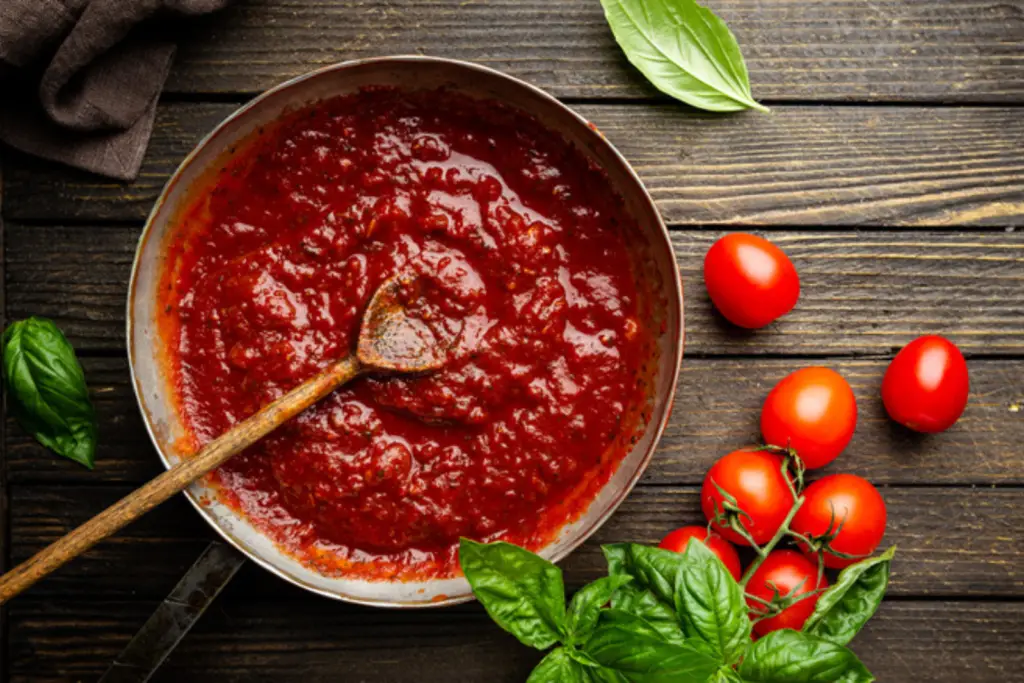
Gumbo is a dish that originated in Louisiana, USA. It is a stew or soup that typically contains meat or seafood, vegetables, and a roux-based sauce made from flour and fat. The dish often includes the “holy trinity” of Cajun and Creole cooking: onion, bell pepper, and celery. Gumbo can be served over rice and is often accompanied by hot sauce or other condiments. Freezing gumbo is a great way to preserve it for later use, whether you want to enjoy it as a quick meal or serve it to guests.
Here are the steps to freeze gumbo:
Step 1: Allow the gumbo to cool.
Allowing gumbo to cool completely at room temperature is an important step in the freezing process to prevent bacterial growth and ensure that the gumbo freezes evenly. When gumbo is cooked, it becomes a warm and moist environment that is perfect for the growth of bacteria. Freezing gumbo while it is still warm can trap bacteria inside the dish, causing it to spoil faster when thawed and reheated.
To cool gumbo, remove it from the heat source and let it sit at room temperature until it cools down. It is important to make sure that the gumbo is not left at room temperature for too long, as this can also lead to bacterial growth. The FDA recommends that food should not be left at room temperature for more than 2 hours, and only 1 hour if the temperature is above 90°F (32°C).
To speed up the cooling process, you can divide the gumbo into smaller portions and spread it out in a thin layer on a baking sheet. This will increase the surface area of the gumbo, allowing it to cool faster. Once the gumbo has cooled to room temperature, it is ready to be portioned and frozen.
Step 2: Portion the gumbo.
Dividing the gumbo into individual servings can help to prevent waste, as you can thaw and reheat only what you need. It also makes meal planning and preparation more convenient, as you can easily grab a portion from the freezer and have a quick and easy meal on hand.
To portion the gumbo, first, make sure that it has cooled completely to room temperature. Then, use a ladle or measuring cup to scoop the gumbo into the containers or bags. Be sure to leave some room at the top of the container or bag for expansion during freezing.
If using bags, remove as much air as possible before sealing to prevent freezer burn. Label each container or bag with the date and contents so that you can keep track of what you have in the freezer and how long it has been stored.
Step 3: Label the containers.
When labeling the containers, it is important to include the date and contents, as well as any other relevant information that can be useful when thawing and reheating the gumbo.
Including the number of servings in each container can be helpful when planning meals and deciding how much to thaw. It is also useful to include any specific information about the gumbo, such as the type of meat or seafood that is included, as this can help to prevent confusion and ensure that the gumbo is properly thawed and reheated.
Labeling the containers can be done using a marker or labeling tape, and it is important to make sure that the labels are clear and easy to read. It is also a good idea to place the labeled containers in a visible and accessible area in the freezer, so that you can easily find them when needed.
Step 4: Seal the containers.
Sealing the containers is an important step in the freezing process to prevent freezer burn and keep the gumbo fresh. It is crucial to ensure that each container or bag is tightly sealed to prevent air from getting in, as this can cause the gumbo to become dehydrated and develop freezer burn.
If you’re using resealable bags, it’s important to remove as much air as possible before sealing. This can be done by gently pressing the bag and pushing out any excess air before sealing it tightly. Alternatively, you can use a vacuum sealer to remove all the air from the bag and create an airtight seal.
For containers, it’s important to use ones that are freezer-safe and have a tight-fitting lid. Make sure that the lid is securely in place and pressed down onto the surface of the gumbo to prevent air from getting in.
When sealing the containers, it’s also important to leave some space at the top to allow for expansion during freezing. A general rule of thumb is to leave about 1/2 inch of space at the top of the container to prevent it from bursting.
Step 5: Freeze the gumbo.
Once the gumbo has been portioned, labeled, and sealed in freezer-safe containers or bags, it’s ready to be placed in the freezer.
The ideal temperature for freezing gumbo is below 0°F (-18°C), as this will help to prevent bacterial growth and keep the gumbo fresh. It’s important to make sure that the freezer is set to the appropriate temperature and that the gumbo is placed in a location where the temperature is consistent.
When placing the containers or bags of gumbo in the freezer, it’s a good idea to leave some space around each one to allow for proper airflow. This will help to ensure that the gumbo freezes evenly and stays fresh.
How long can you store gumbo in the freezer?
You can store gumbo in the freezer for up to three months. Beyond three months, the quality of the gumbo can start to deteriorate and the flavor can change. It’s important to label the container or bag with the date it was frozen to keep track of how long it’s been stored.
Step 6: Thaw and reheat the gumbo.
Thawing and reheating the gumbo is an important step in the process of enjoying it again after it has been frozen. It’s important to thaw the gumbo properly to prevent bacterial growth and ensure that it’s safe to eat.
To thaw the gumbo, remove the desired number of servings from the freezer and place them in the refrigerator overnight. Thawing the gumbo slowly in the refrigerator is the safest method, as it allows the gumbo to thaw evenly and prevents the growth of harmful bacteria. Alternatively, you can place the frozen gumbo in a sealed plastic bag and submerge it in cold water, changing the water every 30 minutes until the gumbo is fully thawed. It’s important to avoid defrosting gumbo at room temperature or in warm water, as this can promote bacterial growth and increase the risk of foodborne illness.
Once the gumbo is thawed, it can be reheated on the stovetop or in the microwave. To reheat on the stovetop, place the gumbo in a pot or saucepan and heat it over medium heat, stirring occasionally. To reheat in the microwave, transfer the gumbo to a microwave-safe dish and heat it on high for 1-2 minutes at a time, stirring occasionally, until it’s heated through.
It’s important to heat the gumbo to a safe temperature of 165°F (74°C) before serving, as this will kill any bacteria that may have grown during the thawing process. Stir the gumbo occasionally while reheating to ensure that it heats evenly.
Other related questions
Can you freeze gumbo with shrimp?
Yes, you can freeze gumbo with shrimp. However, it’s important to note that shrimp can become tough and overcooked when frozen and thawed. To help prevent this, you can slightly undercook the shrimp before adding it to the gumbo, or you can add the shrimp after reheating the gumbo. It’s also recommended to store the gumbo and shrimp separately in the freezer to maintain their individual textures and flavors. Lastly, it’s important to properly thaw the shrimp before cooking or reheating to ensure even cooking and prevent foodborne illness.
Can I refreeze gumbo?
It is generally safe to refreeze gumbo, provided that it has been stored and handled correctly. However, it’s important to note that each time the gumbo is thawed and refrozen, it can affect the texture and taste of the dish. To ensure the best quality, it’s recommended to freeze gumbo in individual portions, thaw only what you need, and consume it within three months. It’s also important to thaw and reheat the gumbo properly to avoid the risk of foodborne illness.
Can you freeze gumbo with file powder?
Yes, you can freeze gumbo with file powder. However, it’s important to note that file powder can become gummy or clumpy when frozen and thawed. To help prevent this, you can add the file powder to the gumbo after reheating instead of before freezing. Alternatively, you can freeze the gumbo without the file powder and add it after reheating. It’s important to store the gumbo in an airtight container or freezer bag to prevent freezer burn or moisture loss, which can also affect the quality of the file powder.
How can you tell if frozen gumbo has gone bad?
You can tell if frozen gumbo has gone bad if it has an off odor or flavor, has freezer burn or ice crystals on the surface, or has changed in texture, such as becoming mushy or slimy. If you’re unsure about the quality of the gumbo, it’s better to err on the side of caution and discard it to avoid foodborne illness. It’s important to follow proper storage guidelines and use airtight containers or freezer bags to prevent freezer burn and odors.
Can you freeze gumbo with seafood?
Yes, you can freeze gumbo with seafood, but it’s best to add the seafood after thawing for the best texture and taste. Freezing seafood can change its texture and make it tough, so it’s better to avoid overcooking it. It’s also important to use airtight containers or freezer bags to prevent freezer burn and odors.
Can you freeze gumbo with okra?
Yes, you can freeze gumbo with okra, but the okra may become soft and slimy when thawed. To minimize the texture change, it’s recommended to blanch the okra before adding it to the gumbo. This helps to retain some of the okra’s crunchiness and texture. It’s also important to use airtight containers or freezer bags to prevent freezer burn and odors.
Can you freeze gumbo with chicken and sausage?
Yes, you can freeze gumbo with chicken and sausage. When freezing gumbo with meat, it’s important to cook the meat fully before adding it to the gumbo. It’s also recommended to let the gumbo cool to room temperature before transferring it to an airtight container or freezer bag. This helps to prevent condensation from forming in the container, which can cause freezer burn and make the gumbo taste off.
Should you add any additional liquid to the gumbo before freezing it?
It’s not necessary to add additional liquid to the gumbo before freezing it. Gumbo is typically a liquid-based dish, and the liquid in the gumbo will expand as it freezes. It’s important to leave enough space in the container or bag to allow for expansion, but adding extra liquid is not recommended as it can cause the gumbo to become watery or thin when thawed.
Can you freeze gumbo roux?
Yes, you can freeze gumbo roux. Roux is a mixture of flour and fat that is used to thicken gumbo and other dishes. It’s important to let the roux cool to room temperature before transferring it to an airtight container or freezer bag. Freezing roux can be a time-saving technique as it can be used later to quickly make gumbo or other dishes. When ready to use, simply thaw the roux in the fridge overnight and add it to your recipe as directed.
Can you freeze gumbo with rice?
Yes, you can freeze gumbo with rice. However, it’s important to keep in mind that rice can become dry and lose its texture when frozen and thawed. To help prevent this, you can slightly undercook the rice before adding it to the gumbo, or you can freeze the gumbo without the rice and add freshly cooked rice after reheating. Additionally, it’s recommended to store the gumbo and rice separately in the freezer to maintain their individual textures and flavors.








